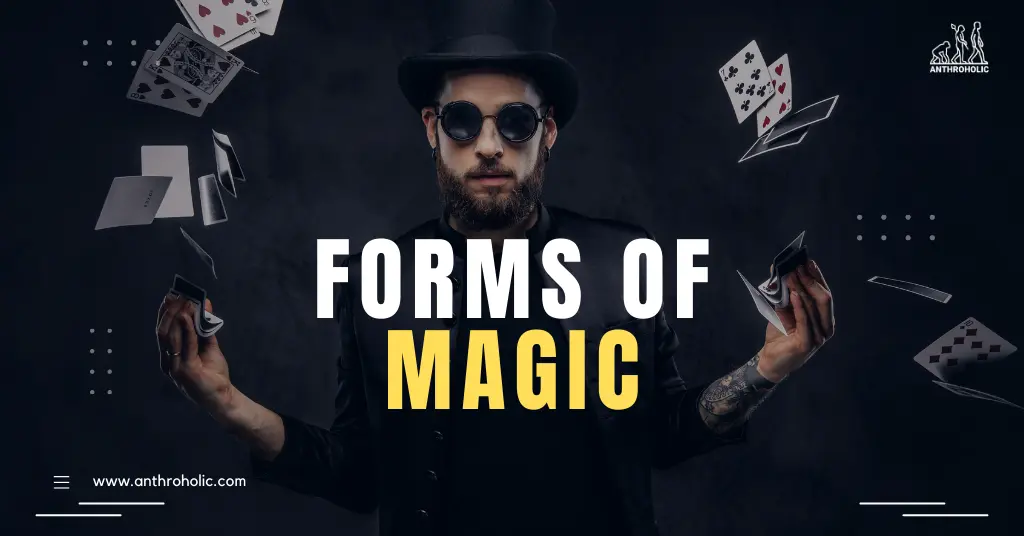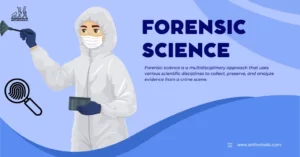AI Answer Evaluation Platform Live Now. Try Free Answer Evaluation Now
Forms of Magic
Magic, as a cultural phenomenon, has fascinated human societies across time and geography. The concept of magic transcends the dichotomy of real and unreal, enveloping a broad array of practices and beliefs that fundamentally shape human understanding and interactions with the world. The field of anthropology, particularly, has devoted significant attention to the classification and analysis of magic in various cultures. Among the luminaries in this area, two figures stand out: James Frazer and Raymond Firth.

James Frazer’s Classification of Magic
The Scottish anthropologist Sir James George Frazer, in his seminal work “The Golden Bough” (1890), laid down one of the earliest and most influential classifications of magic [1]. He categorised magic into two primary types:
- Sympathetic Magic: This category is premised on the principle of “like affects like,” implying that an effect resembles its cause. Frazer further divided this into:
- Contagious Magic: This assumes that things once in contact continue to act on each other even after physical contact has been severed. For instance, harming a person’s hair or nail clippings to inflict damage on the person himself/herself.
- Homeopathic (Imitative) Magic: Here, it is believed that like produces like. An example could be creating a figure of an enemy and destroying it to cause harm to the real enemy.
- Negative Magic: This category encompasses practices aimed at repelling harmful influences or averting bad luck.
Firth’s Classification of Magic
Following Frazer, Raymond Firth, a British anthropologist, proposed a refined classification of magic based on its functional role in society [2]. His categories include:
- Technological Magic: Pertains to magic aimed at manipulating the physical environment, such as rainmaking rituals or fertility spells.
- Therapeutic Magic: Encompasses magical practices aimed at healing or warding off disease, a common example being medicinal charms or rituals.
- Protective Magic: This category includes spells or amulets used for protection against harm or danger.
- Destructive Magic: Includes practices intended to harm or kill, such as voodoo or cursing.
Other Classifications of Magic
While Frazer and Firth’s classifications remain highly influential, various anthropologists have suggested alternate classifications. Bronisław Malinowski, for instance, introduced a functionalist view of magic, linking it to anxiety alleviation and control over uncertainties [3].
Another approach, suggested by E.E. Evans-Pritchard, relates magic to notions of causality. He distinguished between two forms of magical causality [4]:
- Associative Magic: Magic which relies on symbolic associations, closely resembling Frazer’s sympathetic magic.
- Non-associative Magic: Magic that does not involve a symbolic link between the magical act and its intended outcome, focusing more on the invocation of mystical powers.
In the table below, a summary of these classifications is presented.
| Frazer | Firth | Malinowski | Evans-Pritchard | |
|---|---|---|---|---|
| Primary Forms of Magic | Sympathetic Magic, Negative Magic | Technological Magic, Therapeutic Magic, Protective Magic, Destructive Magic | Magic as Anxiety Control | Associative Magic, Non-associative Magic |
| Main Concepts | Contagious Magic, Homeopathic Magic | Functional Role of Magic | Uncertainty Alleviation | Symbolic Association, Invocation of Powers |
Conclusion
Understanding the diverse classifications of magic provides invaluable insights into the rich tapestry of human cultural practices. It offers a window into how societies attempt to explain, control, and engage with their world through symbolic rituals and practices. These varied perspectives also highlight the adaptability and diversity of human cultures, reminding us that magic, far from being a remnant of the past, continues to shape our present in profound and often overlooked ways.
References
[1] Frazer, J. G. (1890). The Golden Bough.
[2] Firth, R. (1964). Elements of social organization.
[3] Malinowski, B. (1948). Magic, Science, and Religion.
[4] Evans-Pritchard, E. E. (1937). Witchcraft, Oracles, and Magic Among the Azande.




